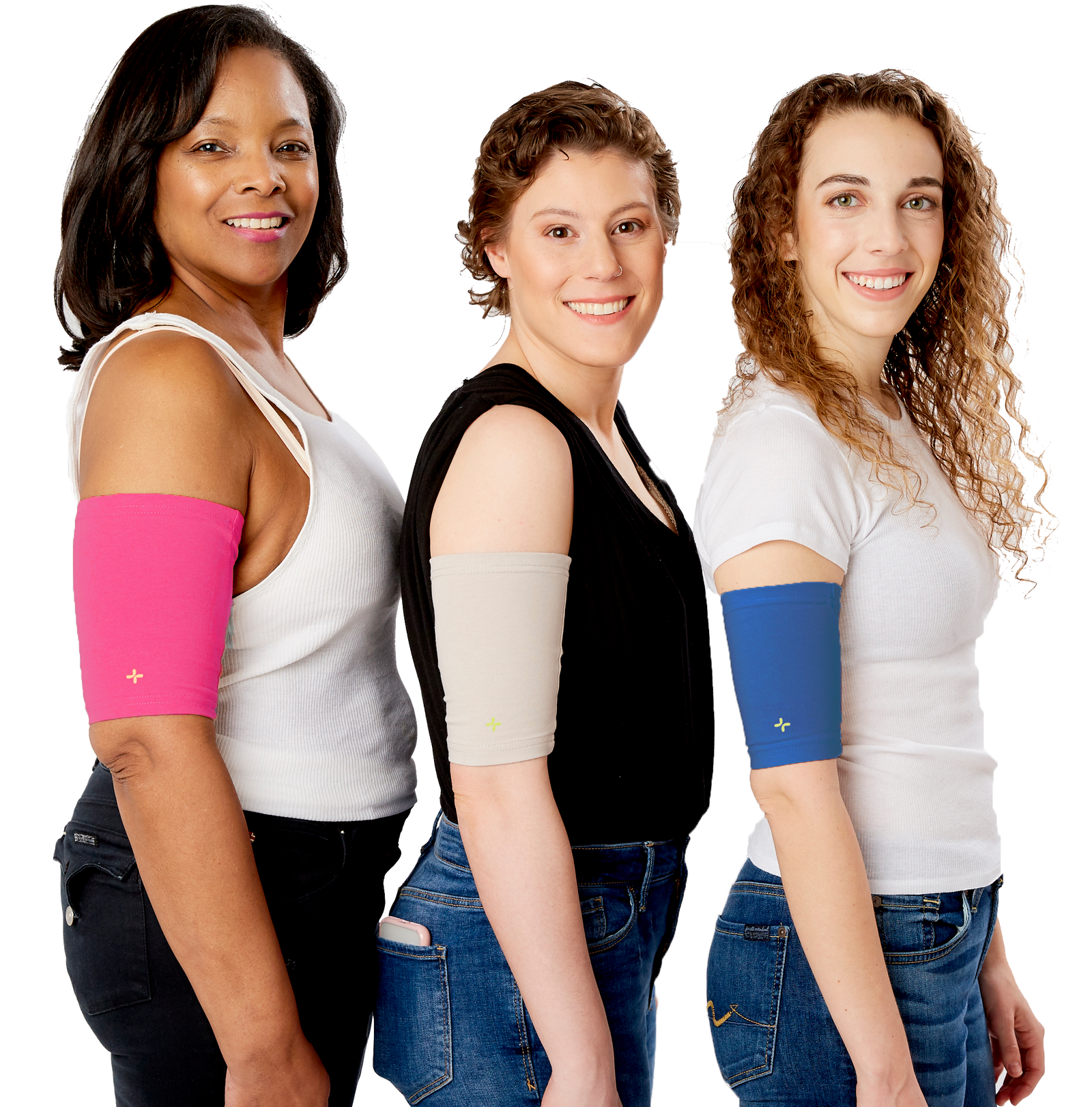Recently, a customer opened our eyes to a new use for our PICC line covers. Myra emailed us after seeing an article written about us in the New York Times. She’s currently wearing a continuous glucose sensor transmitter (CGM) on her arm, and is tired of people asking her how she hurt herself. As a solution, she bought one of our PICC line covers as “camouflage” and is planning to be our “beta tester” for people with arm CGM products.
Although there is a wealth of covers, cases, and other accessories for abdomen CGM abdomen products, sleeves for arm CGM products are almost nonexistent on the web. For Myra and many other people looking to conceal their arm CGM products, our PICC line covers may be their most viable option. In addition, for people looking to be active while wearing CGM products, our sleeve can help prevent their CGMs from getting loose or knocked off.
Although our PICC line covers were originally designed for people receiving IV treatment through a PICC line, they are also suitable for covering up or containing an arm CGM, according to several doctors, including emergency physician Greg Weingart (who is also one of our advisors).
In this blog post, we’ll be giving a short introduction to CGMs and what they’re used for.
What is glucose monitoring, and why do people with diabetes need to do it?
With diabetes, your body has trouble tracking glucose levels all day and night to ensure the right amount of insulin is released at the right time. To successfully manage diabetes, a monitoring system is needed to consistently check your glucose levels. The most common glucose monitoring solutions are blood glucose meters and continuous glucose monitoring (CGM) systems.
What is a CGM?
A continuous glucose monitor is a device that measures glucose levels continuously, twenty-four hours a day. The glucose monitor may help you understand how food, exercise, and meditation impact your glucose levels, so you can better manage your diabetes. Many continuous glucose monitors also include alarms to indicate when your glucose levels have exceeded or fallen below your pre-set levels.
How does a CGM work?
CGMs contain a tiny electrode called a glucose sensor that is inserted under the skin to measure glucose levels in tissue fluid. The sensor is connected to a transmitter that sends the information via wireless radio frequency to a monitoring and display device. The device can detect and notify you if your glucose is reaching a high or low limit. The latest Medtronic CGM systems can actually alert you before you reach your glucose limits.
Where are CGMs typically inserted?
Depending on the type of monitor, a small glucose-sensing device (or sensor) is inserted just under the skin of your stomach or arm. The sensor measures glucose levels every few seconds and sends the information via a wireless transmitter to a monitor.
Do CGMs replace fingersticks?
It is recommended that you calibrate CGM systems with fingersticks 3-4 times per day for optimal glucose sensor accuracy. CGM does require at least 1 fingerstick blood glucose reading every 12 hours to calibrate.
Overall, what are the benefits of CGM?
A blood glucose meter only provides a brief snapshot of your glucose level at a single moment in time. A CGM device, though, gives you a greater view of your glucose trends. CGM provides you with:
- The direction your glucose levels are going
- Early notification of oncoming lows and highs
- Alerts for lows or highs while you are sleeping or anytime
- Insights into how food, physical activity, medication, and illness impact your diabetes
CGM can provide valuable information at crucial points during the day, including before and during exercise, prior to driving, before test/exam-taking, and in the middle of the night.
How do I know if CGM is suitable for me?
CGM can be used by type 1 and type 2 diabetes patients who would like better glucose control to improve the health and quality of their lives. CGM is especially helpful for people who:
- Want to reduce their A1C targets without increasing hypoglycemic events (low blood glucose)
- Have frequent low glucose levels or are unaware of their low blood sugars
- Are pregnant or thinking about becoming pregnant
- Are children and adolescents at or above their target A1C if they are willing to use the device every day
How do CGMs relate to insulin pumps?
Often, CGMs are combined with insulin pumps. Based on CGM readings, the insulin pump delivers tiny drops of rapid-acting insulin to match your needs.
If you have any questions or comments about CGMs, or ideas for blog posts, feel free to email us at wecare@careandwear.com!
Our Picc Covers










Leave a comment (all fields required)